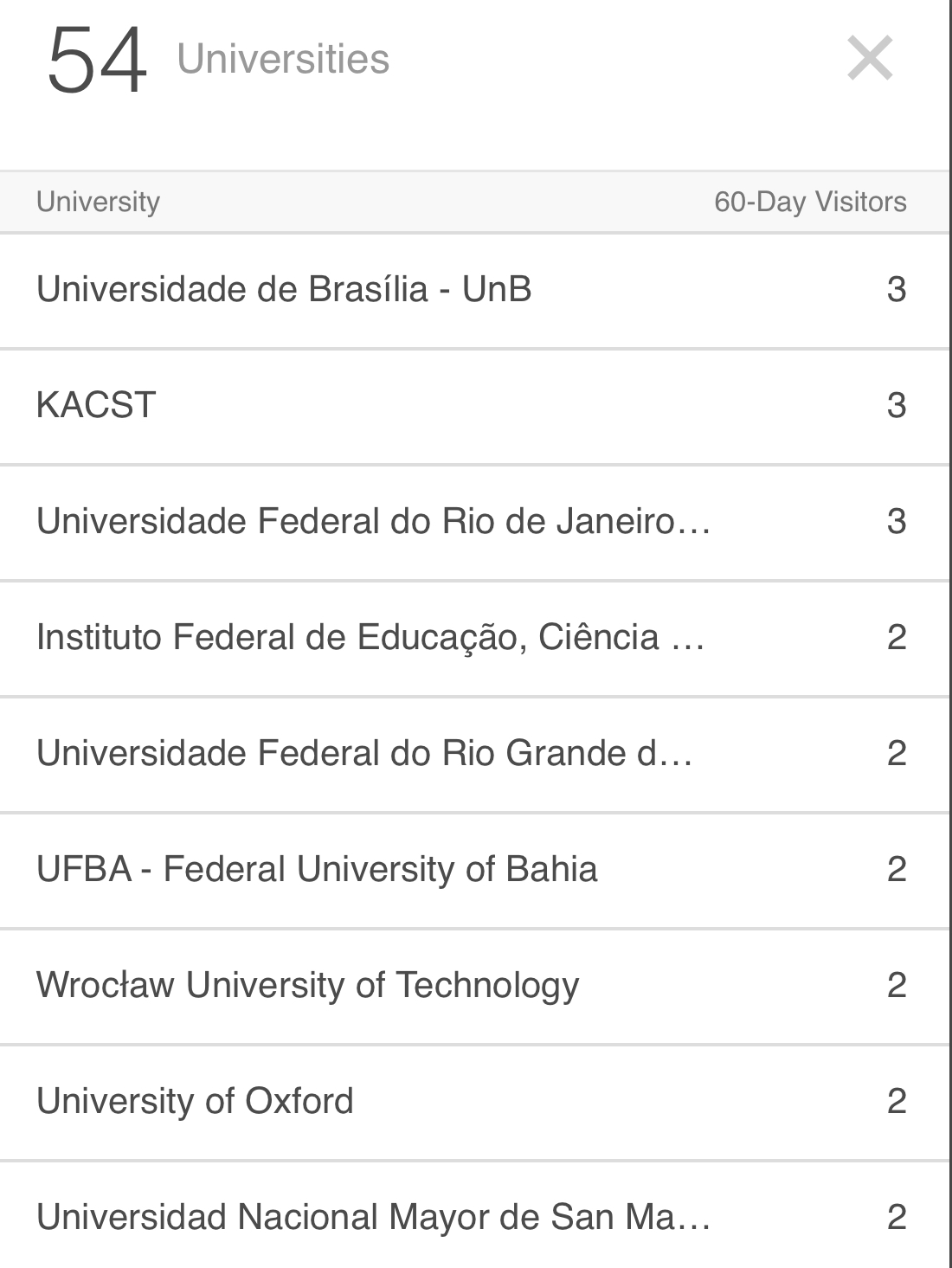Redução da viscosidade do biodiesel de Ricinus communis L. (MAMONA) por acetilação química
DOI:
https://doi.org/10.47456/bjpe.v7i3.35894Palavras-chave:
Derivatização, RMN, químicaResumo
O óleo da semente de mamona (Ricinus communis L.) é utilizado para a produção de biodiesel devido a sua resistência e ao fato de não competir com a produção alimentícia, contudo a elevada concentração de ácido ricinoleico em sua composição química conferem ao óleo de R. communis algumas características atípicas, como a elevada viscosidade. Portanto, esta pesquisa objetivou analisar a reação de acetilação dos ésteres ricinoleicos como alternativa de reduzir a viscosidade do biodiesel de R. communis. O óleo das sementes de R. communis foi caracterizado e transesterificado por via metílica avaliando o tempo reacional (30 minutos e 60 minutos), posteriormente foi realizado a acetilação utilizando o anidrido acético como reagente e piridina como catalisador. Realizou-se ensaios físico-químicos do óleo e biodiesel e RMN de 1H e 13C do óleo e biodiesel acetilado. As propriedades físico-químicas estavam dentro das especificações, com exceção de densidade e viscosidade. A análise por RMN de 1H e 13C demonstraram a presença majoritária de ácido ricinoleico no óleo de R. communis e comprovaram a eficiência da reação de acetilação. A acetilação reduziu a viscosidade em 30,45% pelo método A e 32,66% no B. A acetilação química se apresenta como uma alternativa para a redução da viscosidade do biodiesel de R. communis.
Downloads
Referências
Agência Nacional do Petróleo, Gás Natural e Biocombustíveis. (2014). Resolução ANP Nº 45 de 25/08/2014. Dispõe sobre a especificação do biodiesel contida no Regulamento Técnico ANP nº 3 de 2014 e as obrigações quanto ao controle da qualidade a serem atendidas pelos diversos agentes econômicos que comercializam o produto em todo o território nacional. Diário da união: Brasília.
Assunção, J. C. C.; Valdevino, F. I. S. P., & Rodrigues, F. E. A. (2020). Acetilação enzimática do biodiesel de Ricinus communis L. (mamona) visando a redução de sua viscosidade. Conexões Ciência e Tecnologia 14(3), 84-93. https://doi.org/10.21439/conexoes.v14i3.1459
Azevedo, D. M. P., & Lima, E. F. (2001). Agronegócio da mamona no Brasil. Brasília: Embrapa Informação Tecnológica.
Borges, I. B., Faria, W. O., Pereira, E. C., Pureza, M. S., Siquara, L. L., Freitas, R. R., & Porto, P. S. S. Programa jovens e meninas fazendo engenharia:cultivo de biomassa microalgal. Brazilian Journal of Production Engineering 2(2), 14-19. https://doi.org/10.0001/v2n3_nt01
Barros, A. I., Oliveira, A. P., Magalhães, M. R. L., & Villa, R. D. (2012). Determination of sodium and potassium in biodiesel by flame atomic emission spectrometry, with dissolution in ethanol as a single sample preparation step. Fuel 93, 381-384. https://doi.org/10.1016/j.fuel.2011.08.060
Barros, L. H. C.; Purificação, M. C., Campanha, N., Silva, T. F. H., & Santos, A. G. (2020). Biodiesel do óleo da semente de pinha produzido por reação via aquecimento e ultrassom. South American Journal of Basic Education, Technical and Technological 7(1), 94-107. Recuperado de https://periodicos.ufac.br/index.php/SAJEBTT/article/view/3316
Brasil. Lei nº 11.097, de 13 de janeiro de 2005. Dispõe sobre a introdução do biodiesel na matriz energética brasileira. Diário Oficial da República Federativa do Brasil, Brasília, DF, 14 jan. 2005.
Cangemi, J. M., Santos, A. M., & Neto, S. C. (2010). A revolução verde da mamona. Química Nova na Escola 32(1), 1-6. Recuperado de http://qnesc.sbq.org.br/online/qnesc32_1/02-QS-1209.pdf
Chechetto, R. G., Siqueira, R., & Gamero, C. A. (2010). Balanço energético para a produção de biodiesel pela cultura da mamona (Ricinus communis L.). Revista Ciência Agronômica 41(4), 546-553. https://doi.org/10.1590/S1806-66902010000400006
César, A. S., & Batalha, M. O. (2011). Análise dos direcionadores de competitividade sobre a cadeia produtiva de biodiesel: o caso da mamona. Produção 21(3), 484-497. https://doi.org/10.1590/S0103-65132011005000039
Costa, L. G., Sitoe, B. V., Santos, D. Q., & Neto, W. B. (2020). Quantificação do teor de biodiesel de crambe em misturas com diesel utilizando espectroscopia MIR e seleção de variáveis. Química Nova 43(6), 723-728. https://doi.org/10.21577/0100-4042.20170554
Das, M., Sarkar, M., Datta, A., & Santra, A. K. (2018). An experimental study on the combustion, performance and emission characteristics of a diesel engine fuelled with diesel-castor oil biodiesel blends. Renewable Energy 119, 174-184. https://doi.org/10.1016/j.renene.2017.12.014
Elango, R. K., Sathiasivan, K., Muthukumaran, C., Thangavelu, V., Rajesh, M., & Tamilarasan, K. (2019). Transesterification of castor oil for biodiesel production: Process optimization and characterization. Microchemical Journal 145(1), 1162–1168. https://doi.org/10.1016/j.microc.2018.12.039
Erdoğana, S., Balki, M. K., & Sayin, C. (2020). The effect on the knock intensity of high viscosity biodiesel use in a DI diesel engine. Fuel 253, 1162-1167. https://doi.org/10.1016/j.fuel.2019.05.114
Ferreira, R. S., & Melo, A. S. (2019). Análise das fontes de crescimento do valor bruto da produção da mamona no período de 1990 a 2016. Revista em Agronegócio e Meio Ambiente 12(2), 487-513. https://doi.org/10.17765/2176-9168.2019v12n2p487-513
Fracetto, F. J. C., Fracetto, G. G. M., Feigl, B. J., Cerri, C. C., & Neto, M. S. (2015). Emissões de gases de efeito estufa na produção de mamona e de seus subprodutos. Revista Caatinga 28(4), 90-98. https://doi.org/10.1590/1983-21252015v28n410rc
Keera, S. T., El Sabagh, S. M., & Taman, A. R. (2018). Castor oil biodiesel production and optimization. Egyptian Journal of Petroleum 27, 979-984. https://doi.org/10.1016/j.ejpe.2018.02.007
Knothe, G. (2001). Determining the blend level of mixtures of biodiesel with conventional diesel fuel by fiber-optic near-infrared spectroscopy and 1h nuclear magnetic resonance spectroscopy. Journal of the American Oil Chemists' Society, 78(10), 1025-1028. https://doi.org/10.1007/s11746-001-0382-0
Knothe, G., & Steidley, K. R. (2005). Kinematic viscosity of biodiesel fuel components and related compounds. Influence of compound structure and comparison to petrodiesel fuel components. Fuel 84, 1059-1065. https://doi.org/10.1016/j.fuel.2005.01.016
Konradt-Moraes, L. C., Oliveira Junior, J. P., Cardoso, C. A. L., & Vieira, S. C. H. (2019). Extração e quantificação do teor de lipídios de Microalgas de Piscicultura visando a produção de Biodiesel. In: Santos, F. (Org.), Meio Ambiente em Foco, (Vol. 9, Chap. 11, pp. 99-105). Belo Horizonte: Poisson.
Lima, R. L. S., Severino, L. S., Sampaio, L. R., Sofiatti, V., Gomes, J. Á., & Beltrão, N. E. M. (2011). Blends of castor meal and castor husks for optimized use organic fertilizer. Industrial Crops and Products 33(2), 364-368. https://doi.org/10.1016/j.indcrop.2010.11.008
Lima, J. R. O., Silva, R. B., Silva, C. C. M., Santos, L. S. S., Santos Júnior, J. R., Moura, E. M., & Moura, C. V. R. (2005). Biodiesel de babaçu (Orbignya sp.) obtido por via etanólica. Química Nova 30(3), 600-603. https://doi.org/10.1590/S0100-40422007000300019
Lôbo, I. P., Ferreira, S. L. C., & Cruz, R. S. (2009). Biodiesel: Parâmetros de qualidade e métodos analíticos. Química Nova 32(6), 1596-1608. https://doi.org/10.1590/S0100-40422009000600044
Menezes, F. B. J., & Bernardo, A. N. (2017). Biodisel No Ceará: Uma perspectiva desenvolvimentista e divulgatória. Revista Gestão & Sustentabilidade Ambiental 6(1), 233-250. http://dx.doi.org/10.19177/rgsa.v6e12017233-250
Moreto, E., & Alves, R. F. (1986). Óleos e gorduras vegetais: processamento e análises. Florianópolis: Editora da UFSC.
Oliveira, D. S., Fonseca, X. D. S., Farias, P. N., Bezerra, V. S., Pinto, C. H. C., Souza, L. D., Santos, A. G. D., & Matias, L. G. O. (2012). Obtenção do biodiesel através da transesterificação do óleo de Moringa Oleífera Lam. Holos 28(1), 49-61. https://doi.org/10.15628/holos.2012.803
Parente, J. S. E. (2003). Biodiesel, o livro: Aventura tecnológica num país engraçado. Fortaleza: Tecbio.
Oliveira, C. Y. B., D'alessandro, E. B., Antoniosi Filho, N. R., Lopes, R. G., & Derner, R. B. (2021). Synergistic effect of growth conditions and organic carbon sources for improving biomass production and biodiesel quality by the microalga Choricystis minor var. minor. Science of the Total Environment 759, e143476. https://doi.org/10.1016/j.scitotenv.2020.143476
Oliveira Junior, J., Konradt-Moraes, L. C., Castro, T. L. A., & Santos, M. S. M. (2021). Produção de biodiesel com Salvinia auriculata cultivada com biossólidos ou vinhaça. In: Maziero, R. (Org.), Engenharias: Tendências e Inovações (Chap. 10, pp.117-128). Belo Horizonte: Synapse Editora.
Osorio-González, C. S., Gómez-Falcon, N., Sandoval-Sales, F., Saini, R., Brar, S. K., & Ramírez, A. A. (2019). Production of biodiesel from castor oil: A review. Energies 13(10), e2467. https://doi.org/10.3390/en13102467
Ozcanli, M., Akar, M. A., Calik, A., & Serin, H. (2017). Using HHO (Hydroxy) and hydrogen enriched castor oil biodiesel in compression ignition engine. International Journal of Hydrogen Energy 42(36), 23366-23372. https://doi.org/10.1016/j.ijhydene.2017.01.091
Postaue, N., Konradt-Moraes, L. C., & Asmus, R. M. F. (2019). Chorume como fonte de nutriente na produção da biomassa microalgal. Revista E-Xacta 12(2), 11-19. https://doi.org/10.18674/exacta.v12i2.2746
Rana, M., Dhamija, H., Prashar, B., & Sharma, S. (2012). Ricinus communis L. – A Review. International Journal of PharmTech Research 4(4), 1706-1711. Recuperado de https://sphinxsai.com/2012/oct-dec/Pharmpdf/PT=48(1706-1711)OD12.pdf
Rizzardo, R. A. G., Milfont, M. O., Silva, S. E. M., & Freitas, B. M. (2012). Apis mellifera pollination improves agronomic productivity of anemophilous castor bean (Ricinus communis). Anais da Academia Brasileira de Ciências 84(4), 1137-1145. https://doi.org/10.1590/S0001-37652012005000057
Rovere, B. O., Rodrigues, J. H., & Teleken, J. G. (2020). Redução do índice de acidez através da neutralização e esterificação para produção de biodiesel. Brazilian Journal of Development 6(5), 24678-24686. https://doi.org/10.34117/bjdv6n5-064
Souta, M. J., Simionatto, E. L., Schar f, D. R., Motta, V., Moser, D., Oliveira, L. B., Pedroso, L. R. M., Wisniewski Junior, A., Wiggers, V. R., Botton, V., & Meier, H. F. (2018). Avaliação de características de biodieseis de fontes alternativas submetidos a condições de armazenagem diferenciada. Química nova 41(6), 648-655. http://dx.doi.org/10.21577/0100-4042.20170222
Sia, C. B., Kansedo, J., Tan, Y. H., & Lee, K. T. (2020). Evaluation on biodiesel cold flow properties, oxidative stability and enhancement strategies: A review. Biocatalysis and Agricultural Biotechnology 24, e101514. https://doi.org/10.1016/j.bcab.2020.101514
Singh, D., Sharma, D., Soni, S. L., Sharma, S., & Kumari, D. (2019). Chemical compositions, properties, and standards for different generation biodiesels: A review. Fuel 253, 60-71. https://doi.org/10.1016/j.fuel.2019.04.174
Silva, C. C. M., & Fonseca, G. G. (2021). Avaliação de técnicas de refino de óleo reciclado para a produção biodiesel. Brazilian Journal of Production Engineering 7(2), 169-176. https://doi.org/10.47456/bjpe.v7i2.35513
Silva, C. C. M., Carvalho, N. L. C., & Fonseca, G. G. (2021). Indústrias produtoras de biodiesel: destinação correta aos efluentes através de implantação de políticas de produção mais limpa (P+L). Recima21 – Revista científica multidisciplinar 2(4), e24265. https://doi.org/10.47820/recima21.v2i4.265
Silva, G. C. R., & Andrade, M. H. C. (2020). Criação de banco de dados para simulação da produção de biodiesel. parte 2: Estimativa de propriedades termofísicas do biodiesel. The Journal of Engineering and Exact Sciences 6(2), 179-188. https://doi.org/10.18540/jcecvl6iss2pp0179-0188
Singh, D., Sharma, D., Soni, S. L., Sharma, S., Sharma, P. K., & Jhalani, A. (2020). A review on feedstocks, production processes, and yield for different generations of biodiesel. Fuel 262, e116553. https://doi.org/10.1016/j.fuel.2019.116553
Tabile, R. A., Lopes, A., Dabdoub, M. J., Camara, F. T., Furlani, C. E. A., & Silva, R. P. (2009). Biodiesel de mamona no diesel interior e metropolitano em trator agrícola. Engenharia Agrícola 29(3), 412-423. https://doi.org/10.1590/S0100-69162009000300008
Tat, M. E., & Van Gerpen, J. H. (1999). The kinematic viscosity of biodiesel and its blends with diesel fuel. Journal of the American Oil Chemists' Society 76, 1511-1513. https://doi.org/10.1007/s11746-999-0194-0
Torrentes-Espinoza, G., Miranda, B. C., Vega-Baudrit, J., & Mata-Segreda, J. F. (2017) Castor oil (Ricinus communis) supercritical methanolysis. Energy 140, 426-435. http://dx.doi.org/10.1016/j.energy.2017.08.122
Ventura, D. A. M. F., Alves, K. B., & Santos, M. K. V. A. (2010). Análise comparativa entre o biodiesel de girassol e o biodiesel de mamona. In: IV Congresso Brasileiro de Mamona e I Simpósio Internacional de Oleaginosas Energéticas, João Pessoa, 2010.
Ventura, M., Deus, W. B., Silva, J. R., Andrade, L. H. C., Catunda, T., & Lima, S. M. (2018). Determination of the biodiesel content in diesel/biodiesel blends by using the near-near-infrared thermal lens spectroscopy. Fuel 212, 309-314. https://doi.org/10.1016/j.fuel.2017.10.069
Vieira, B., Nadaleti, W. C., & Sarto, E. (2021). The effect of the addition of castor oil to residual soybean oil to obtain biodiesel in Brazil: Energy matrix diversification. Renewable Energy 165, 657-667. https://doi.org/10.1016/j.renene.2020.10.056
Zuniga, A. D. G., Paula, M. M., Coimbra, J. S. R., Martins, E. C. A., Silva, D. X., & Telis-Romero, J. (2011). Revisão: Propriedades Físico-Químicas do Biodiesel. Pesticidas: Revista de Ecotoxicologia e Meio Ambiente 21, 55-72. http://dx.doi.org/10.5380/pes.v21i0.25939
Downloads
Publicado
Edição
Seção
Licença
Copyright (c) 2021 Carmem Cícera Maria da Silva, Leila Cristina Konradt Moraes, José Ribeiro dos Santos Júnior, Thiago Luis Aguayo de Castro (Autor)

Este trabalho está licenciado sob uma licença Creative Commons Attribution 4.0 International License.

Atribuição 4.0 internacional CC BY 4.0 Deed
Esta licença permite que outros remixem, adaptem e desenvolvam seu trabalho não comercialmente, contanto que eles creditem a você e licenciem suas novas criações sob os mesmos termos.



















































